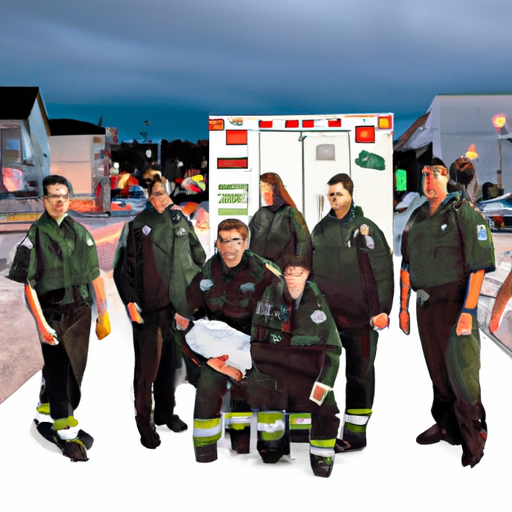Discussing the Canadian Opioid Crisis: A Closer Look at The Situation in Sudbury
In a profoundly alarming report brought in light by CTV News, it has been unveiled that the city of Sudbury in Ontario, Canada, is grappling with the devastating outcomes of the vastly escalating opioid crisis. This piece discusses the opioid crisis and various efforts made to combat its detrimental repercussions on the societal, health, and economic front.
The Plight of the Paramedics
Frontline healthcare workers, particularly paramedics, are working restlessly to tackle the mounting medical emergencies stemming from opioid overdoses. The current ordeal is marked by an exponential rise in the frequency of opioid-related distress calls, intensifying the strain on the healthcare system and its staff. However, the pandemic’s restrictions and strict safety procedures add to the hysteria, creating an overwhelmingly demanding situation.
Insights shared by Derek Wilson, a paramedic and communications officer with Sudbury’s paramedic services, paint a vivid picture of the havoc opioids are wreaking. Essentially, opioids, namely fentanyl or carfentanil, have presumably infiltrated the drug supply considerably. Not only has this led to a rise in substance abuse cases, but it has also raised the alarm for several opioid overdose cases, making it a prevalent health and societal issue.
Combating the Opioid Crisis
The community, however, has been resilient in their endeavours to stem the opioid crisis. Through the Delayed Response to Overdose Strategy (DART), paramedics attempt to provide immediate attention to those most vulnerable to opioid abuse. Essentially, the DART strategy entails paramedics reaching out to individuals who have recently survived an opioid overdose to prevent a possible relapse.
Further, the distribution of Naloxone kits as a part of a provincial initiative has proven to be a life-saving measure. Naloxone, an opioid antagonist, reverses the lethal effects of an opioid overdose if administered promptly, making it a critical intervention tool in combatting the opioid crisis.
Effects and Efforts to Battle the Crisis – In Bullet Points
- Increased strain on healthcare system
- Economic drain due to frequent medical emergencies
- Significant surge in crime rates
- Increasing homeless population
- Threat to public health
- Rising number of opioid-related deaths
- Efforts like DART strategy and Naloxone kits distribution
The Opioid Class Action: A Path Towards Recovery
As a collective approach to healing and restitution, the Canadian opioid abatement class action lawsuit stands as a beacon of hope. This lawsuit seeks compensation from manufacturers and distributors of opioids for their role in fueling the crisis. Ostensibly, it aims at rechanneling the funds procured to the communities afflicted by the opioid crisis.
Closing Thoughts
While the Sudbury’s situation serves as a poignant exemplification of the devastating impact of the opioid crisis, it is representative of the broader Canadian landscape. Catastrophic in its effects, the opioid crisis is gradually permeating into every stratum of society, leading to social, economic, and medical threats. Notwithstanding, collective efforts like the Canadian opioid abatement class action and the active fight led by frontline warriors using tools like Naloxone underscore the resilience to combat the opioid crisis. While the road to recovery is long and winding, the firm resolve evident through these efforts is a testament to a hopeful future.
